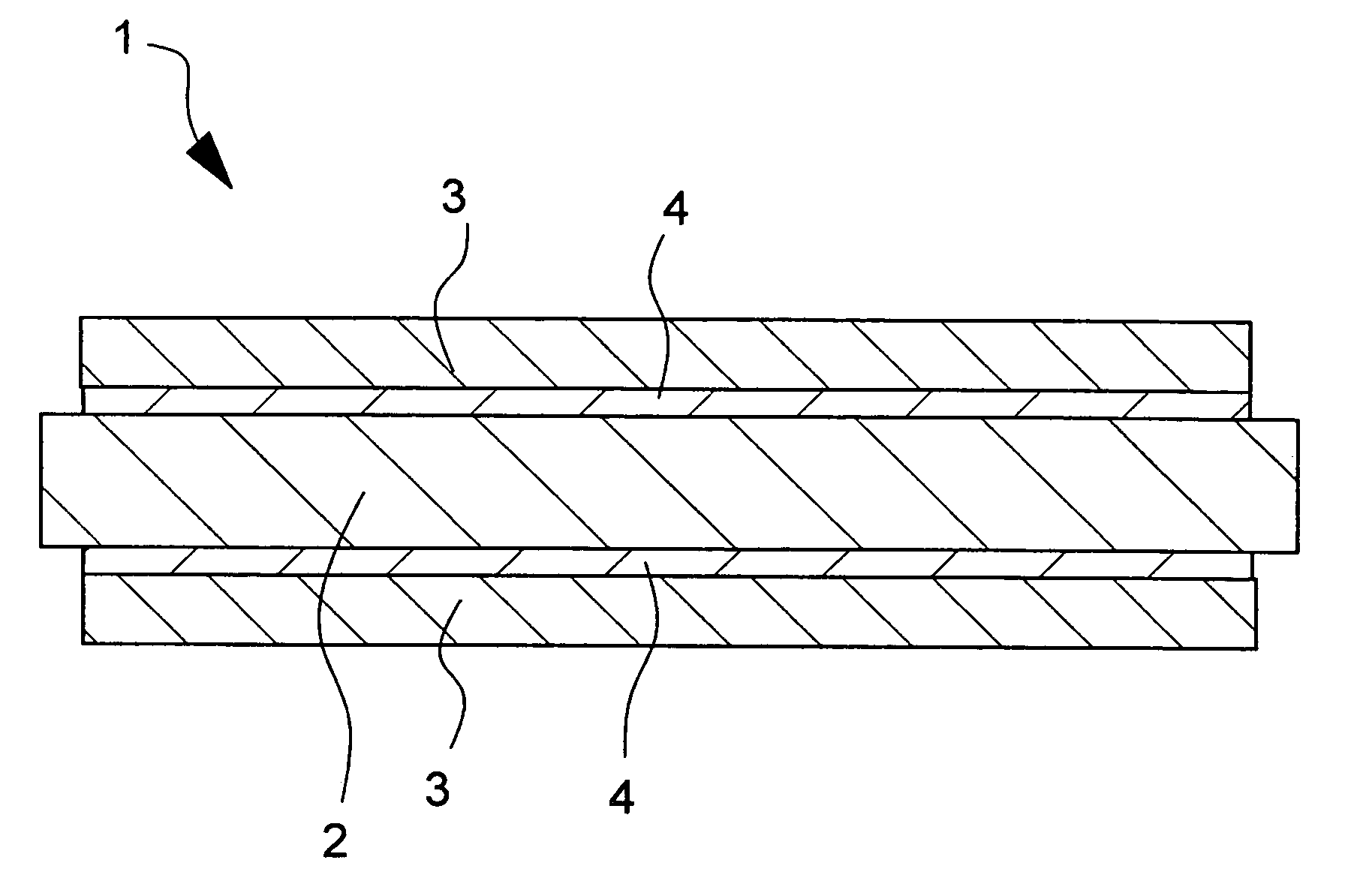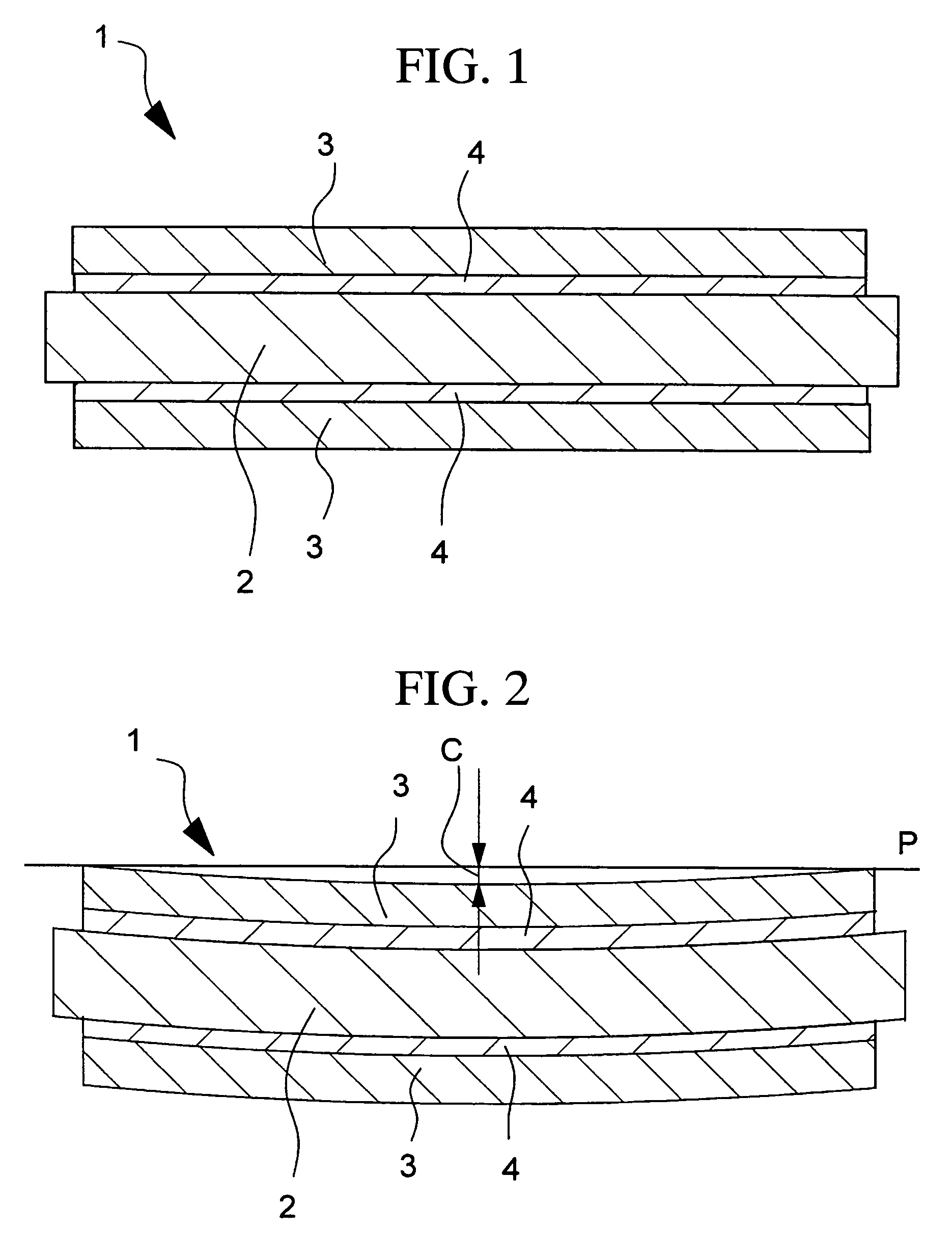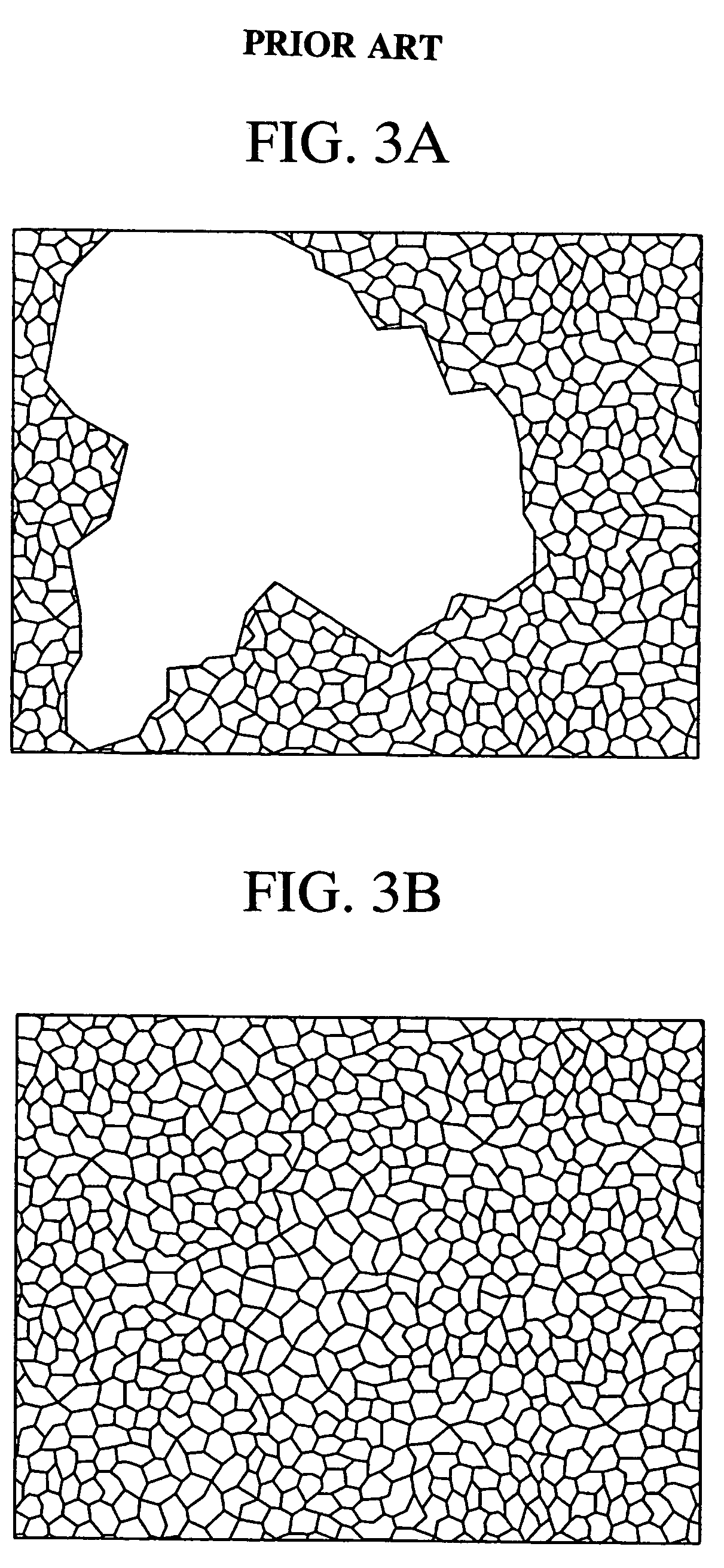Circuit board, method of producing same, and power module
a technology of circuit boards and power modules, applied in the field of circuit boards, method of producing same, and power modules, can solve the problems of ceramic substrates that may develop cracks, long-term reliability tends to be unsatisfactory, and crystals within the conductive layer growing overly larg
- Summary
- Abstract
- Description
- Claims
- Application Information
AI Technical Summary
Benefits of technology
Problems solved by technology
Method used
Image
Examples
example 1
[0058]A power module of the structure shown in FIG. 4 was prepared.
[0059]On both surfaces of an AlN ceramic substrate 2 of dimensions 50 mm×50 mm×0.635 mm were bonded Al plates 3 with the same length and width dimensions as the insulating ceramic substrate 2 but with a thickness of 0.4 mm, thus preparing a circuit board 1. The Al plates 3 were prepared by a final heat treatment at 450° C., followed by rolling with a draft of 30%, and comprised 99.99% by mass of Al, as well as 23 ppm of Cu, 30 ppm of Si, and 33 ppm of Fe. The brazing material 4 used an Al—Si based brazing material comprising 8% by mass of Si. The melting point of this brazing material was 626° C. With an Al plate 3, a sheet of the Al—Si based brazing material 4, the insulating ceramic substrate 2, another sheet of the Al—Si based brazing material 4, and another Al plate 3 overlaid on top of one another, in that order, the layers were bonded together by subjecting the layered structure to a pressure of 200 kPa, heatin...
PUM
| Property | Measurement | Unit |
|---|---|---|
| crystal grain diameter | aaaaa | aaaaa |
| crystal grain diameter | aaaaa | aaaaa |
| temperature | aaaaa | aaaaa |
Abstract
Description
Claims
Application Information
 Login to View More
Login to View More - R&D
- Intellectual Property
- Life Sciences
- Materials
- Tech Scout
- Unparalleled Data Quality
- Higher Quality Content
- 60% Fewer Hallucinations
Browse by: Latest US Patents, China's latest patents, Technical Efficacy Thesaurus, Application Domain, Technology Topic, Popular Technical Reports.
© 2025 PatSnap. All rights reserved.Legal|Privacy policy|Modern Slavery Act Transparency Statement|Sitemap|About US| Contact US: help@patsnap.com



